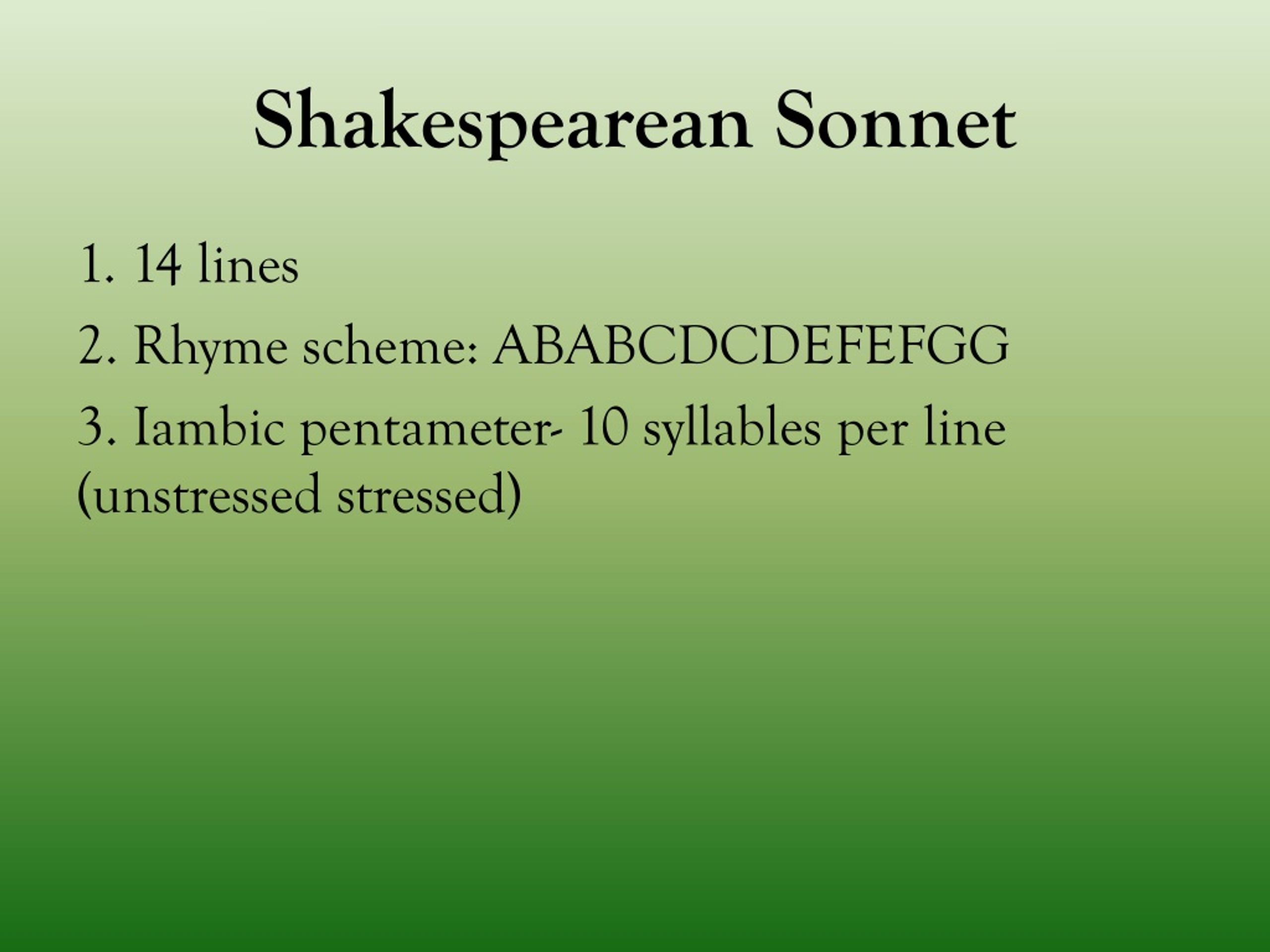

He even feels that historic writings did not mention the beauty of old times. He thinks nothing in the world can beat him in beauty and looks.

This poem is primarily about the speaker’s obsession with his friend’s beauty. Major Themes in “Sonnet 106”: Obsession, praise, love, and beauty are the poem’s central themes.But he fears their biased approach when he says that they may get attracted to him but do not praise him genuinely. However, presently, people feel amazed seeing his friend’s beauty. Unfortunately, they could not live to cherish the beauty they described.
/Sonnets1609titlepage-57e98fff5f9b586c35c7e5d8.jpg)
He is amazed at the divine approach they used to predict the unique beauty prior to his birth. He is so thrilled at his friend’s beauty that he thinks older people prophesied the mesmerizing beauty of the fair youth ages ago. To him, his friend’s foot, brows, eyes, and lips exhibit the same beauty described in ancient works. Although people with antique beauty are dead now, he claims that his friend possesses all the qualities expressed in those chronicles. In those chronicles, he finds appealing and attractive poems about the fairest ladies and lovely knights. It begins when the speaker reads about the descriptions of the most beautiful people of the past.
“Sonnet 106” As a Representative of Love: This poem revolves around the concept of beauty. The poem won popularity due to its subject matter of love and its impact on humankind. The speaker claims that previously written love poems were rather the foreshadowing of his beauty. This sonnet is about the unmatchable beauty of the speaker’s friend. 
It first appeared in 1609 in a series of sonnets written to praise the beauty of a fair youth.
Popularity of “Sonnet 106”: Written by William Shakespeare, a great writer and poet, “Sonnet 106” is a love poem. These lines set the stage for the main idea that the beauty of the youth excels all the beautiful descriptions given in the poetry and ancient historical documents. However, when he sees this young man’s hands, feet, lips, and brows compared to the beautiful descriptions given in those poems, he thinks that the ancient poets would have expressed this beauty of the young man more expertly and in beautiful terms. Shakespeare or his speaker starts the very first line of the sonnet with the mention of the past time saying when he sees the descriptions of the fairest youths in the historical documents of the past he goes through the poetic output of the ancient times to glance at the poems written in praise of great ladies and handsome knights. I see their antique pen would have express’d Of hand, of foot, of lip, of eye, of brow, Then, in the blazon of sweet beauty’s best, In praise of ladies dead and lovely knights, I see descriptions of the fairest wights,




/Sonnets1609titlepage-57e98fff5f9b586c35c7e5d8.jpg)



 0 kommentar(er)
0 kommentar(er)
